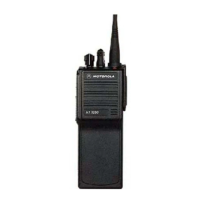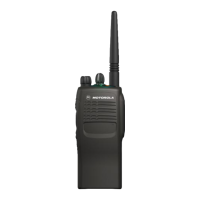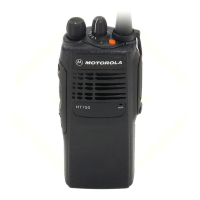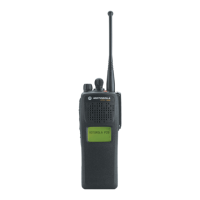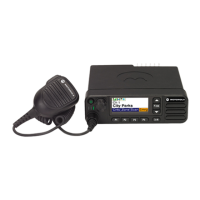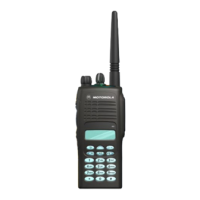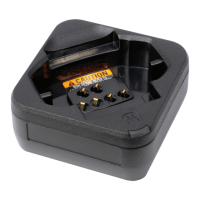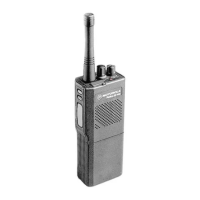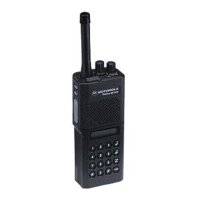III. Troubleshooting Secure Operations
Refer elsewhere in this radio service manual for
disassembly and reassembly information, and refer to
the radio theory/troubleshooting manual for a general
overview of troubleshooting information and proce-
dures. A key variable loader and oscilloscope are
needed to troubleshoot the Secure Module.
NOTE
The Secure Module itself is NOT serviceable. If the
Secure Module is found to be defective then it must
be replaced.
A. ERROR 09/10
The MTS 2000 Series Handie-Talkie™ Portable
Radio automatically performs a self test on every
power-up. Should the radio fail the self tests, the dis-
play will show “ERROR XX/XX” (where XX/XX is
alphanumeric) accompanied by a short beep. If the
display shows “ERROR 09/10” or “E09/10”, then the
radio failed the secure power-up self tests and the
host microcontroller is unable to communicate with the
Secure Module via the SPI bus. Turn off the radio,
check the battery connection, and turn the radio back
on. If the radio still does not pass the self tests, then a
problem exists with the secure operations of the radio.
Since the module is removable, a good first step
in troubleshooting secure operation is simply to
replace the suspect Secure Module with a known
working module. If this does not fix the problem, then
the original module is probably not the cause of the
problem. If the new module does fix the problem, then
the original module must be replaced.
A complete procedure for troubleshooting this
error is listed below:
1. Turn the radio off, check the battery connection,
and turn the radio back on.
2. If the error condition still exists, check that a
Secure Module is installed and make sure that it is
properly connected to the controller board. To do
this, refer to the disassembly and reassembly sec-
tions of this manual.
3. Turn the radio back on.
4. If the error condition still exists and a working
secure module with the same kit number is avail-
able, replace the suspect module with the working
module.
5. If the problem persists, disassemble the radio and
check the encryption connector SPI pins (listed in
Table 1) for data transitions when the radio is
turned on and off. If activity is not seen on all five
lines, check both sides of the connector for broken
connections.
6. Troubleshoot the Controller Board.
52
SIGNAL NAME CONNECTOR PLUG FUNCTION
P1 PIN NUMBER
UNSW B+ 1 Unswitched battery voltage
Vdd 2 Switched 5 volt supply
REF CLK 3 2.1/2.4 MHz clock signal
GROUND 4 Ground
PRE EMPHMIC AUDIO 7 Transmit Clear Audio
RX AUDIO 9 Receive Clear Audio
DISCRIMINATOR 10 Receive Encrypted Audio
GROUND 11 Ground
RESET 12 Radio Reset - Does NOT reset module
KEY/FAIL 13 Keyloading Signal
TX AUDIO 14 Transmit Encrypted Audio
KID 15 Keyloading Signal
DVP WE 16 Keyloading Signal
SPI CLK 17 SPI Data Clock
SPI MOSI 18 SPI Data from Host
SPI MISO 19 SPI Data to Host
JABBA REQ 20 SPI Secure Interrupt Request
JABBA SEL 21 SPI Secure Slave Select
CONT 5V 24 Continuous 5 Volt Regulator Output
5,6,8,22,23,25 Not Used
Table 1. MTS 2000 Single Key Secure Module I/O Definition
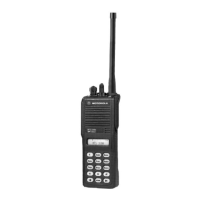
